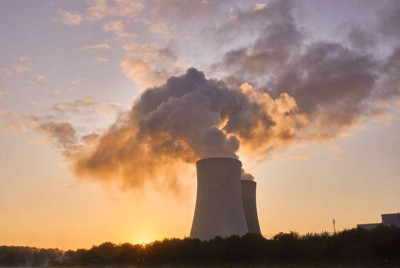
Chemists have found a new use for the waste product of nuclear power—transforming an unused and stockpile into a versatile compound which could be used to create valuable commodity chemicals as well as new energy sources.
Depleted uranium (DU) is a radioactive by-product from the process used to create nuclear energy. With many fearing the health risks from DU, it is either stored in expensive facilities or used to manufacture controversial armour-piercing missiles.
But, in a paper published in the Journal of the American Chemical Society, Professor Geoff Cloke, Professor Richard Layfield and Dr. Nikolaos Tsoureas, all at the University of Sussex, have revealed that DU could, in fact, be more useful than we might think.
By using a catalyst which contains depleted uranium, the researchers have managed to convert ethylene (an alkene used to make plastic) into ethane (an alkane used to produce a number of other compounds including ethanol).
Their work is a breakthrough that could help reduce the heavy burden of large-scale storage of DU, and lead to the transformation of more complicated alkenes.
Prof Layfield said: "The ability to convert alkenes into alkanes is an important chemical reaction that means we may be able to take simple molecules and upgrade them into valuable commodity chemicals, like hydrogenated oils and petrochemicals which can be used as an energy source.
"The fact that we can use depleted uranium to do this provides proof that we don't need to be afraid of it as it might actually be very useful for us."
Working in collaboration with researchers at Université de Toulouse and Humboldt-Universit?t zu Berlin, the Sussex team discovered that an organometallic molecule based on depleted uranium could catalyse the addition of a molecule of hydrogen to the carbon-carbon double bond in ethylene—the simplest member of alkene family—to create ethane.
Prof. Cloke said: "Nobody has thought to use DU in this way before. While converting ethylene into ethane is nothing new, the use or uranium is a key milestone.
"The key to the reactivity were two fused pentagonal rings of carbon, known as pentalene, which help the uranium to inject electrons into ethylene and activate it towards addition of hydrogen."

